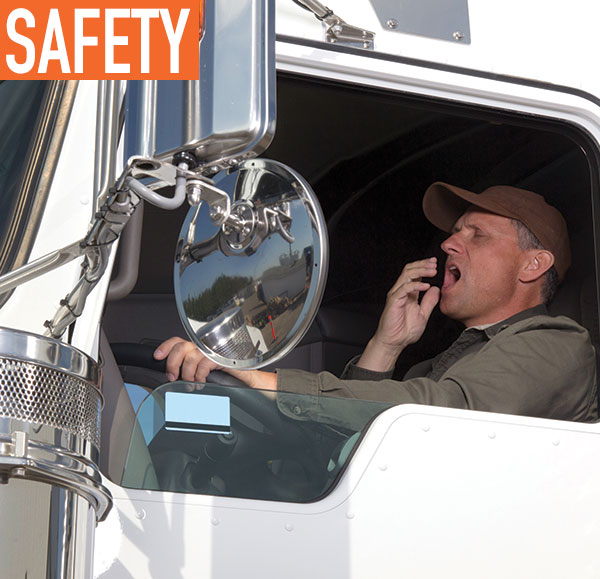Fatigue management is a complex subject with a number of key areas that have an impact on fatigue, alertness, and well-being. Perhaps the core area of fatigue management is sleep and all the ways it contributes to overall health and safety. When a driver is not well rested, his alertness is impaired and he may be prone to errors while behind the wheel, ranging from drifting out of his lane to near misses with other vehicles to outright accidents or crashes.
HEALTH CONCERNS
Poor sleep or not enough sleep can also have an effect on a driver’s health. One common sleep disorder—obstructive sleep apnea—is a risk factor for heart attack, stroke, and diabetes. These are all serious conditions that can potentially cause a driver to fail his DOT CME physical and may disqualify him for employment in the future. One common health issue that drivers wrestle with is high blood pressure. Sleep apnea is more than just the nuisance of snoring and fatigue; it is a cause of high blood pressure.
The good news is that treating sleep apnea with CPAP not only reverses the sleep apnea while you wear it, it can also lower blood pressure. A number of scientific studies have shown that as long as the CPAP is worn during sleep, blood pressure is lowered and blood pressure medications may be reduced.
CPAP is recognized as the gold standard of treatment for sleep apnea, especially moderate to severe cases. CPAP stands for Continuous Positive Airway Pressure. Drivers are well acquainted with pneumatic brakes that operate with air pressure. CPAP simply acts as a pneumatic splint that gently blows air through a mask into the nose and/or mouth continuously to keep the “breathing tube” in the throat from closing off during sleep. It doesn’t breathe for the wearer; it just keeps the upper airway open so the wearer can sleep normally.

CPAP—recognized as the gold standard of sleep apnea treatment—acts as a pneumatic splint, keeping the throat from closing off during sleep.
JUST BECAUSE YOU DON’T KNOW IT…
In my 31 years in the field of sleep medicine, I have learned that obstructive sleep apnea is often misunderstood. The word “apnea” means “no breath.” Drivers with sleep apnea may stop breathing anywhere from 50 to 200 times every night and they will not be aware that this is going on. In order to start breathing each time, the brain makes you wake up so briefly that you will not know it has happened. I have heard many patients say that they know they don’t have sleep apnea, because they don’t wake up gasping for breath. Well, most people with sleep apnea don’t do that. How does this contribute to fatigue and sleepiness? If someone woke you up 100 times every night, do you think you would be tired and sleepy the next day?
Drivers who are sleepy from sleep apnea often don’t know this is the case. I have had patients fall asleep talking to me while denying they were sleepy. Thankfully, this level of sleepiness is not very common, but lesser degrees can also be a serious problem. You have to be asleep for roughly 15 seconds to be aware that you were asleep at all. If you fell asleep for only 5-10 seconds, you likely won’t know this has happened. Imagine you are behind the wheel at 50 mph and fall asleep for 5-10 seconds. A whole lot can happen in that time, at that speed—none of it good.
Sleep apnea is one of 84 diagnoses that sleep specialists deal with and comprehensive fatigue management should certainly address this, but a number of other aspects of sleep should be addressed as well. Drivers need adequate time to sleep. Most normal adults require 7-9 hours of sleep in every 24-hour period.
Sleep reduces fatigue, restores health, and maximizes alertness and thinking. Any Fatigue Management program should integrate sleep as the key element.![]()
ABOUT THE AUTHOR:
Dr. Lankford, currently the chief science officer at SleepSafe Drivers, was formerly the director of the Sleep Disorders Center of Georgia—Northside Hospital and still serves as the principal investigator for its Research Division. He has conducted over 165 clinical trials and is published in journals, such as Sleep, Journal of Clinical Sleep Medicine, and Journal of Respiratory and Critical Care Medicine.
_______________________________________________________________________
MODERN WORKTRUCK SOLUTIONS: JANUARY 2016 ISSUE
Did you enjoy this article?
Subscribe to the FREE Digital Edition of Modern WorkTruck Solutions magazine.
![]()




